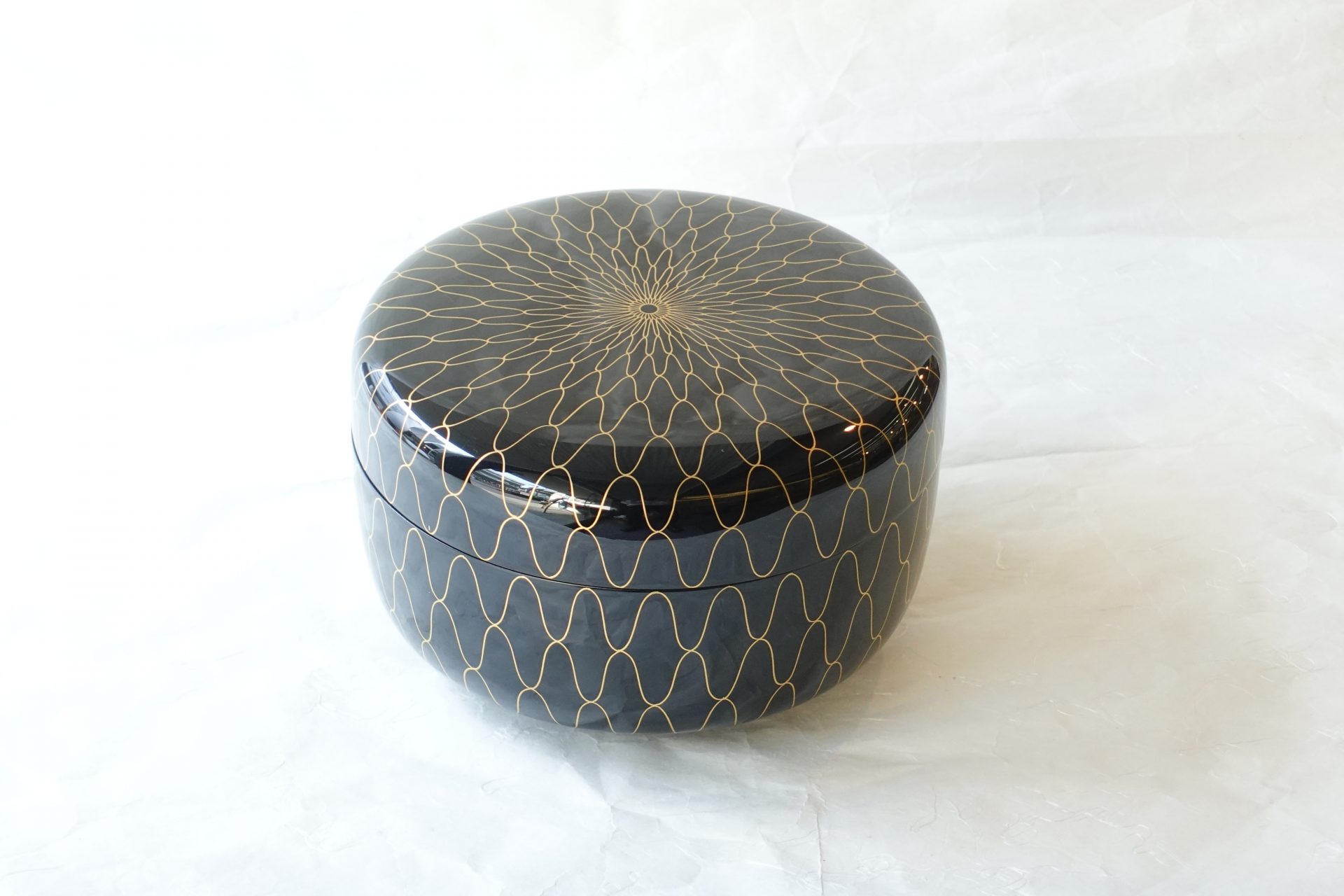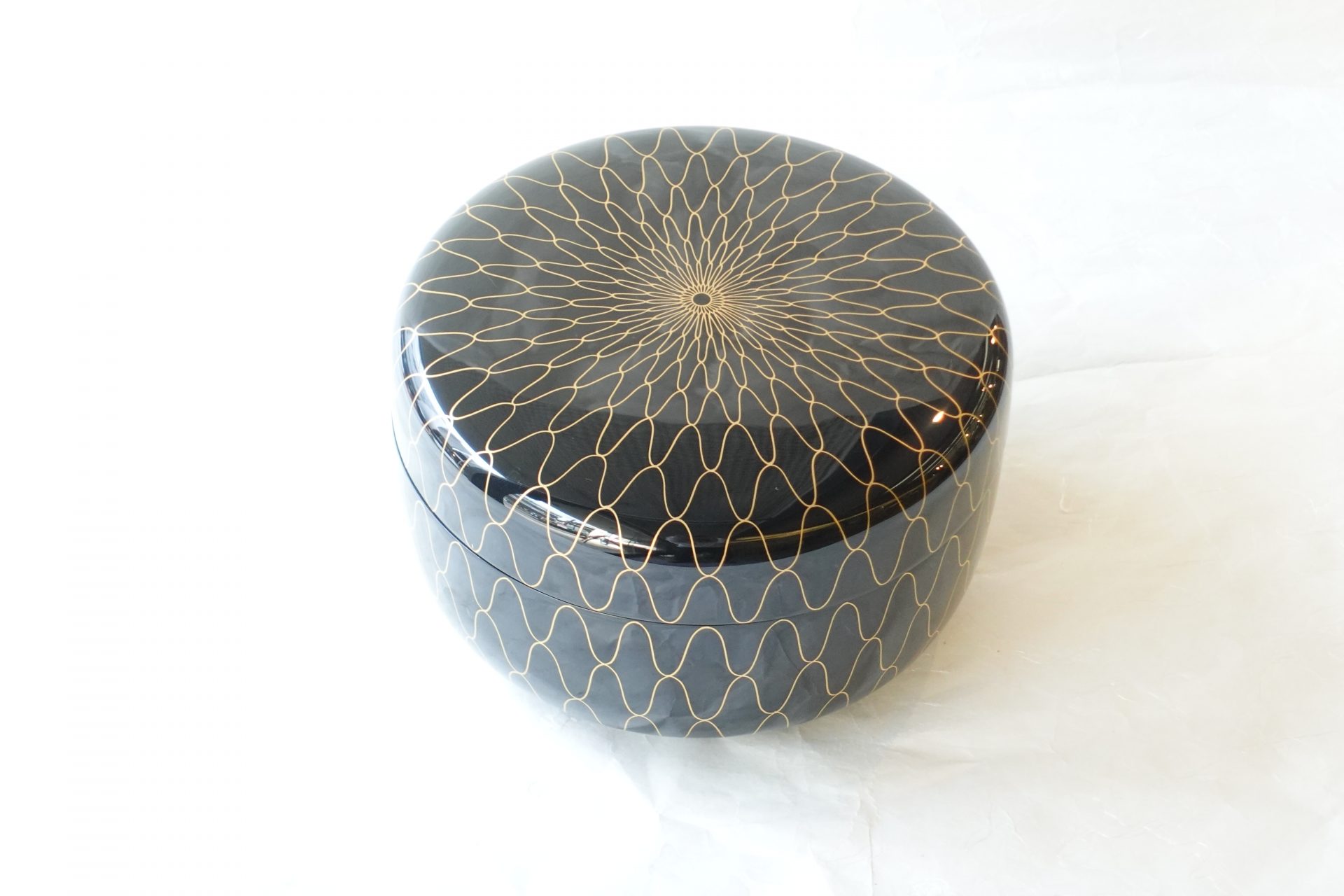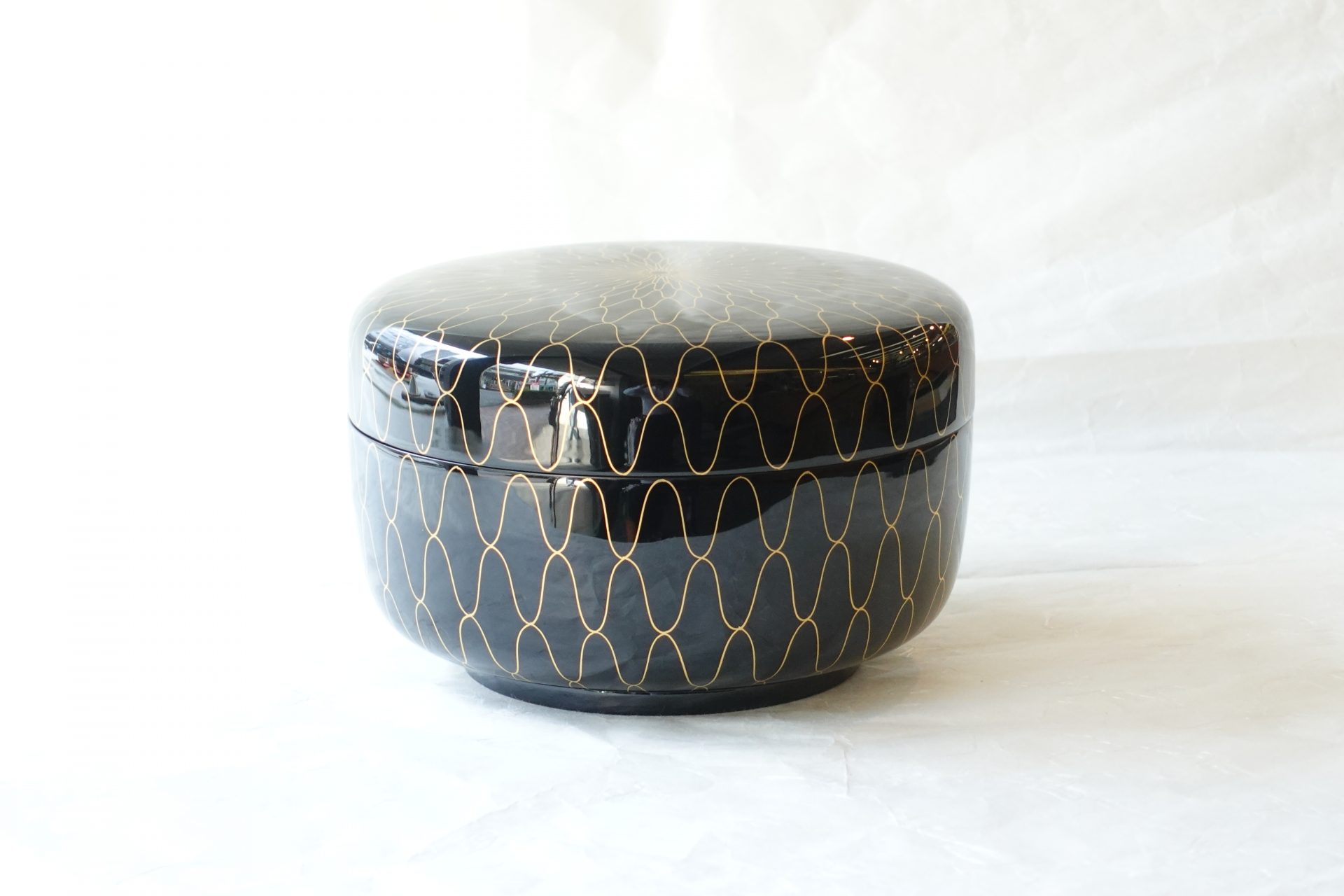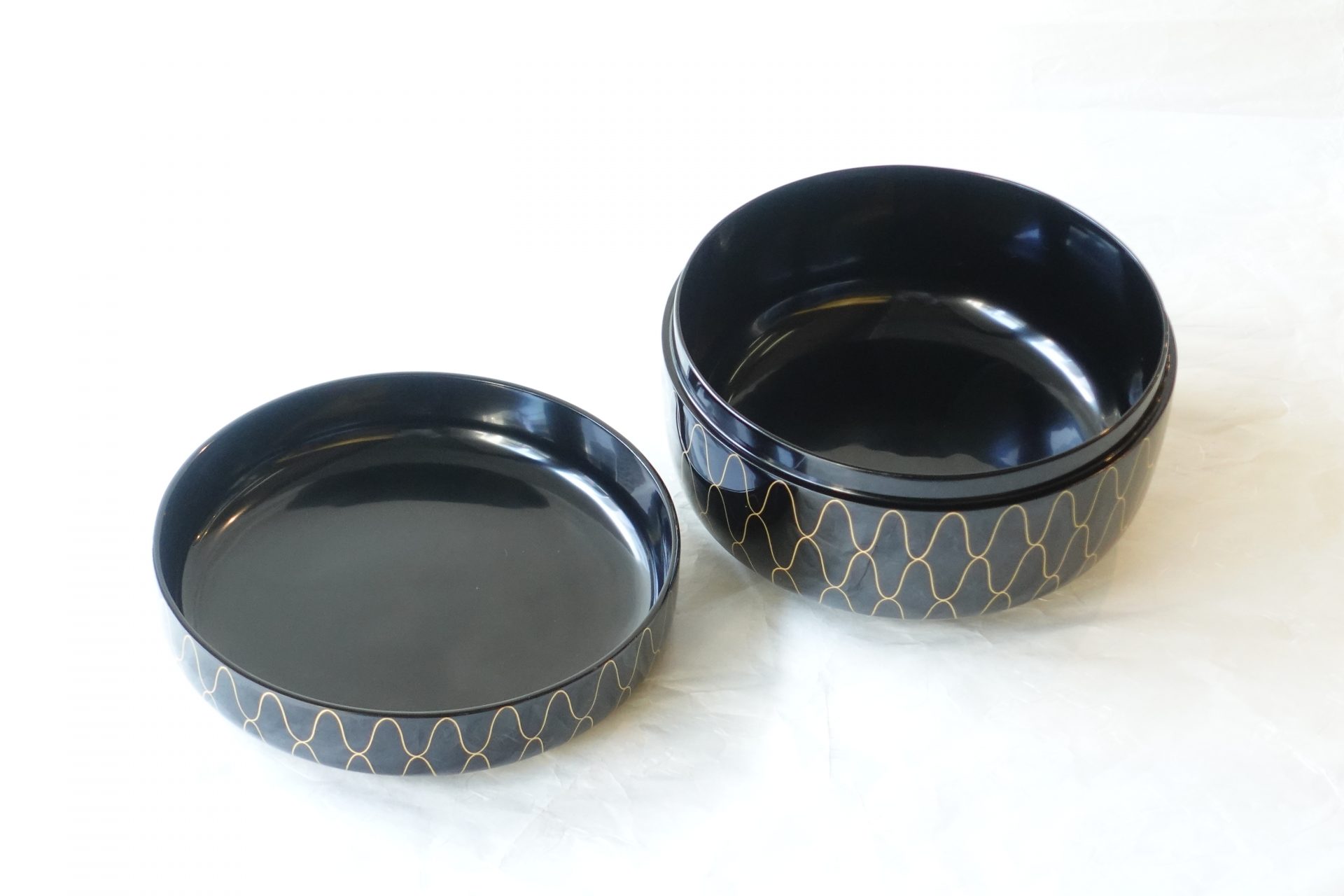山中塗から、木製くりぬきの食籠(じきろう)のご紹介です。
食籠(じきろう)とは、食べ物を入れる器で
蓋が付いていて、形は丸いものが多くなっています。
表千家さんのお茶会では、お菓子を入れて菓子器として
使われることが多いようです。
蓋が付いているので、ホコリが入らず、お菓子など食材の乾燥も防いでくれます。
また、外側は黒塗りの上に金色の網目の柄が描かれており、豪華さがあります。
内側はシンプルに黒一色ですが、それゆえに食材が引き立って見えます。
網目の柄は昔から、大漁とか一網打尽を連想させ、縁起のいい柄なので
好んで網目柄の器を使う方がいらっしゃいます。
網目柄は同じ模様を繰り返すことから「永遠に続くもの」を意味し、
「健康が続く」長寿の象徴とされてきました。
「網」で福を「からめとる」とか「すくいとる」意味があり、縁起のいい吉祥文です。
また、網目は人間の血管に似ていることから
「網目の器を使うと、中風(脳出血・脳梗塞)にならない」
という言い伝えも残っています。
また、「結びつきが強く、離れない」という意味もあるそうです。
本来、主菓子は量感のある生菓子で濃い茶に使われることが多く、
干菓子は薄茶ですが、実際には薄茶でも主菓子が使われることが多くなっています。
菓子以外にも、様々なお料理や食材を盛って使うこともできます。
食籠 径 20.5㎝ 高さ 13㎝
木製 うるし塗
Yamanaka Lacquerware – Wooden Food Container (Jikiro)
Openwork Net Pattern – Black Lacquer Finish
We are pleased to introduce a hand-carved wooden jikiro, crafted in the traditional Yamanaka lacquerware style.
A jikiro is a lidded food container, often round in shape, used for storing or serving food.
In Omotesenke-style tea gatherings, it is commonly used as a kashiki (sweets container) for serving confections.
Because it comes with a lid, it helps keep out dust and prevents sweets or other food items from drying out.
The exterior features a luxurious design—a black lacquer base adorned with a gold net pattern (amime).
The interior is finished in plain black, which enhances the visual appeal of the food placed inside.
The net pattern has long been considered an auspicious motif in Japan, evoking associations with abundance and good fortune, such as a bountiful catch or capturing happiness in one net.
Because the repeating pattern symbolizes continuity and eternity, it is also seen as a symbol of longevity and lasting health.
In addition, the word “ami” (net) carries the meaning of “catching” or “gathering in” good fortune,
making it a popular and auspicious decorative design.
There is even an old belief that, because the net pattern resembles the veins of the human body,
using a jikiro with this motif would protect one from paralysis or strokes.
It is also said to symbolize strong bonds and unbreakable connections.
Traditionally, omogashi (moist, substantial sweets) are served with koicha (thick tea),
while higashi (dry sweets) accompany usucha (thin tea).
However, in modern practice, omogashi are often served even with usucha.
Beyond tea sweets, this versatile container can also be used to serve various dishes or ingredients,
making it a functional and elegant addition to any tea or dining setting.
Dimensions:
Diameter: 20.5 cm Height: 13 cm
Material: Wood Finish: Lacquered (Urushi)
山中漆器 木制 食笼(じきろう)网纹 黑色 漆涂
这是一款来自山中漆器的木制整挖食笼。
“食笼(じきろう)”是一种用于盛放食物的器皿,
带有盖子,多为圆形造型。
在表千家的茶会中,常被用作装点心的“菓子器”。
由于带盖设计,可防止灰尘进入,
同时避免点心或食材受干燥影响,非常实用。
外部以黑漆为底,上绘金色的网纹图样,
整体显得格外华丽高雅。
内部则以简洁的纯黑色涂饰,
反而更能衬托出食材的色泽与美感。
“网纹”自古以来寓意吉祥,
让人联想到“大渔”或“一网打尽”,
因此常被视为好运与丰收的象征。
此外,网纹的连续图案代表“永恒不息”,
寓意“健康长久”,象征长寿。
“网”也有“捕获福气”、“网罗好运”的含义,
是一种非常吉祥的传统纹样。
另有一种说法认为,
网纹与人体血管的形态相似,
使用网纹器皿可避免“中风”(脑出血、脑梗塞)之厄运。
同时,网纹也被赋予“紧密相连、不易分离”的寓意,
象征人际关系的坚固与和谐。
本来,“主菓子”多为质地柔软、分量感较足的生菓子,
多用于“浓茶”席。
而“干菓子”则配“薄茶”,
不过如今即便是薄茶席上也常用主菓子。
除点心外,这款食笼亦可用来盛放各种料理或食材,
用途广泛。
尺寸:直径 20.5cm 高度 13cm
材质:木制 漆涂




